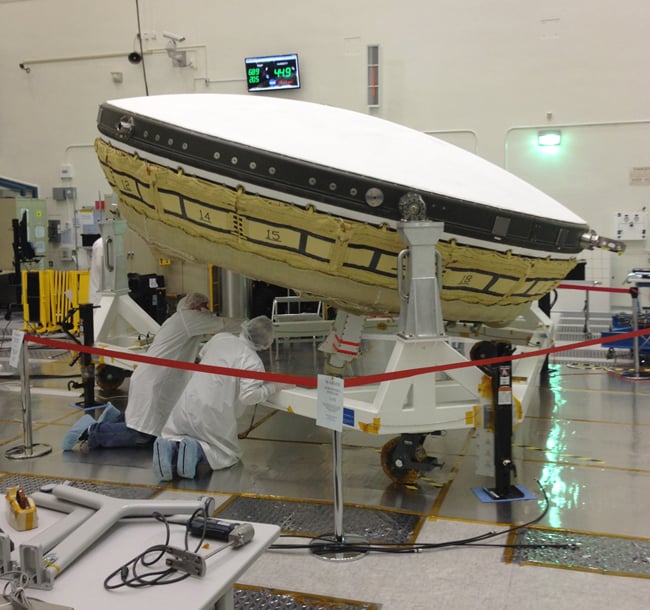This article is more than 1 year old
NASA preps flying saucer ballocket flight
Supersonic vehicle, giant balloon, what could possibly go wrong?
NASA has announced it's poised to do an airborne test of its Low-Density Supersonic Decelerator (LDSD) - a test platform for technologies that may one day safely deposit larger payloads on the surface of Mars.
NASA is developing three devices for deployment in the LDSD flying saucer. It explains: "The first two are supersonic inflatable aerodynamic decelerators - very large, durable, balloon-like pressure vessels that inflate around the entry vehicle and slow it from Mach 3.5 or greater to Mach 2 or lower.
"These decelerators are being developed in 6-meter-diameter and 8-meter-diameter configurations. Also in development is a 30.5-meter-diameter parachute that will further slow the entry vehicle from Mach 1.5 or Mach 2 to subsonic speeds. All three devices will be the largest of their kind ever flown at speeds several times greater than the speed of sound."
NASA's already done a ground-based test of the parachute (see vid), and at the beginning of June, "a large saucer-shaped disk" packing a decelerator and parachute will soar under a giant balloon to an altitude of 36,500m. Following decoupling from the balloon, rockets will blast the saucer to a tad under 55,000m at supersonic speeds.
The space agency adds: "Traveling at 3.5 times the speed of sound, the saucer's decelerator will inflate, slowing the vehicle down, and then a parachute will deploy to carry it to the ocean's surface."
Simple as that. The launch will take place sometime between 3 and 13 June at the US Navy's Pacific Missile Range Facility (PMRF) on Kauai, Hawaii. We're promised live coverage "including the rocket-powered ascent", at NASA TV.
If the LDSD works as planned – and let's face it, what could possibly go wrong? – it promises to increase "payload delivery to the surface of Mars from our current capability of 1.5 metric tons to 2 to 3 metric tons", as well as more accurate landings. ®
Bootnote
Thanks to Stephen Burch for the heads-up. He said: "Come on, LOHAN, the race is on!"

